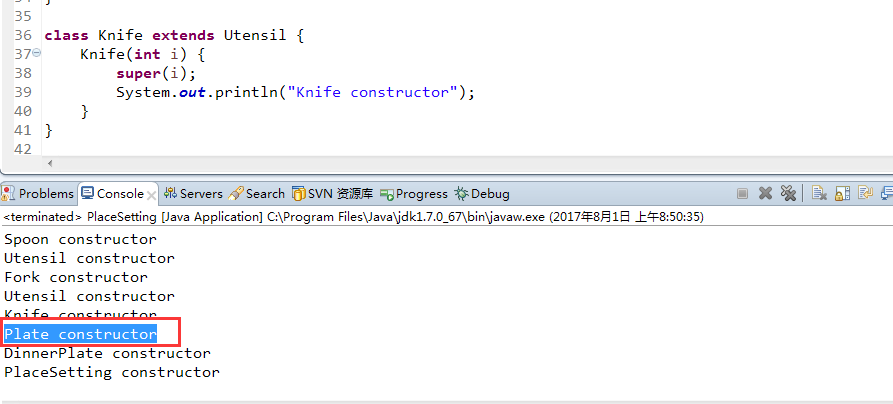package com.demo;
class Plate {
Plate(int i) {
System.out.println("Plate constructor");
}
}
class DinnerPlate extends Plate {
DinnerPlate(int i) {
super(i);
System.out.println("DinnerPlate constructor");
}
}
class Utensil {
Utensil(int i) {
System.out.println("Utensil constructor");
}
}
class Spoon extends Utensil {
Spoon(int i) {
super(i);
System.out.println("Spoon constructor");
}
}
class Fork extends Utensil {
Fork(int i) {
super(i);
System.out.println("Fork constructor");
}
}
class Knife extends Utensil {
Knife(int i) {
super(i);
System.out.println("Knife constructor");
}
}
// A cultural way of doing something:
class Custom {
Custom(int i) {
System.out.println("Custom constructor");
}
}
public class PlaceSetting extends Custom {
Spoon sp;
Fork frk;
Knife kn;
DinnerPlate pl;
PlaceSetting(int i) {
super(i + 1);
sp = new Spoon(i + 2);
frk = new Fork(i + 3);
kn = new Knife(i + 4);
pl = new DinnerPlate(i + 5);
System.out.println("PlaceSetting constructor");
}
public static void main(String[] args) {
PlaceSetting x = new PlaceSetting(9);
}
}
//尽管编译器会强迫我们对基础类进行初始化,并要求我们在构建器最开头做这一工作,但它并不会监视我们是否正确初始化了成员对象。
最终打印输出
Spoon constructor
Utensil constructor
Fork constructor
Utensil constructor
Knife constructor
Plate constructor
DinnerPlate constructor
PlaceSetting constructor
为什么会输出plate,而非Utensil??????????

